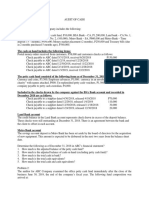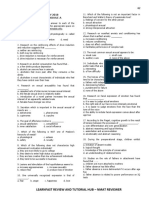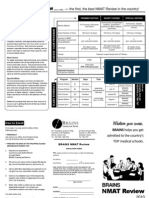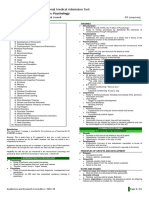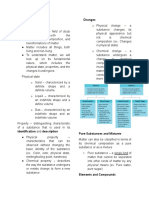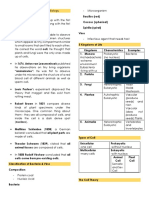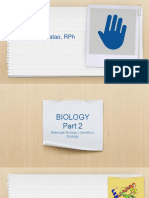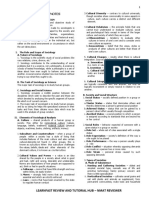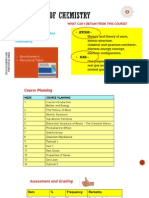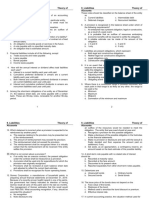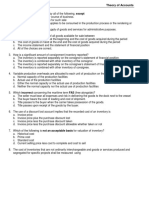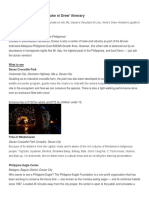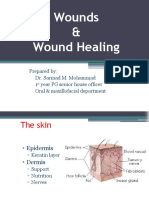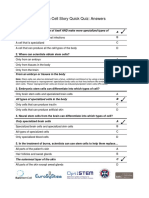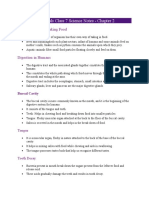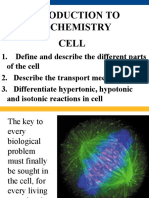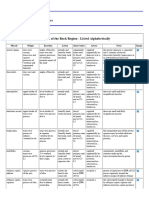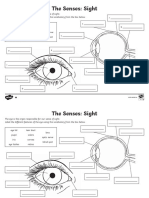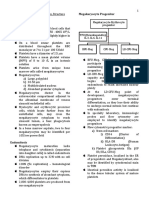BIOLOGY Reviewer
BIOLOGY Reviewer
Uploaded by
andreamrieCopyright:
Available Formats
BIOLOGY Reviewer
BIOLOGY Reviewer
Uploaded by
andreamrieOriginal Description:
Original Title
Copyright
Available Formats
Share this document
Did you find this document useful?
Is this content inappropriate?
Copyright:
Available Formats
BIOLOGY Reviewer
BIOLOGY Reviewer
Uploaded by
andreamrieCopyright:
Available Formats
BIOLOGY REVIEWER!!
RESPIRATORY SYSTEM Respiration- the process of gas exchange and and the bringing of oxygen to the body cells to burn food and harvest its energy Functions: Provides a constant supply of oxygen to keep your body cells functioning Removes carbon dioxide from the body cells **GUYS, ALAM NIYO BA NGAYON KO LANG NALAMAN NA YUNG AIR NA INI-EXHALE NATIN DI PURE NA CO2 HAHAHA SO YEAH NABABAWASAN LANG YUNG % NG OXYGEN AT NADADAGDAGAN YUNG CO2 SA AIR NA ININHALE THEN IN-EXHALE NATIN HAHAHA OK Kinds: o o o External (ventilation)- brings oxygen into the lungs Internal- exchanges oxygen and carbon dioxide between blood and body cells Cellular- changes acid produced during metabolism into harmless chemicals in the cells Nose / mouth Nasal cavity Pharynx Epiglottis Larynx Trachea Bronchi Bronchioles Alveoli
Organs:
*epithelium- tissue that keeps the inner surface moist with mucus *cilia- fine, hairlike extensions of the epithelial cells Mouth & Nose brings air into the body nasal hairs in nostrils trap dust *septum (nose)- divides the nose into two passages -covered with a mucous membrane, where the olfactory receptors are located
Nasal cavity warms & moistens air glands that produce sticky mucus line the nasal cavity traps dust, pollen, and other materials that were not trapped by nasal hairs cilia sweep mucus and trapped material to the back of the throat where it can be swallowed Pharynx throat tube-like passageway used by food, liquid, and air at the lower end of the pharynx is a flap of tissue called the epiglottis o covers the trachea during swallowing so that food does not enter the lungs *glottis- hole between the air and food tube which leads to the larynx *epiglottis- thin piece of cartilage that closes the glottis during swallowing (above the glottis) Larynx voice box the airway to which two pairs of horizontal folds of tissue, called vocal cords, are attached Trachea windpipe air-conducting tube connects the larynx with the bronchi lined with mucous membranes and cilia contains strong cartilage rings which keep it open and allow it to widen when more air is needed Bronchi two short tubes that branch off the lower end of the trachea carry air into the lungs. singular - bronchus Bronchioles tiny branches of air tubes in the lungs connect bronchi to alveoli Alveoli tiny, thin-walled, grapelike clusters at the end of each bronchiole surrounded by capillaries where carbon dioxide and oxygen exchange take place singular - alveolus
Pleura
membrane lining the lungs and chest cavity forms two protective layers lymph- seen between the two layers of pleura that keeps them moist and prevents rubbing Diaphragm muscle wall between the chest and the abdomen that the body uses for breathing inhalation-contracts, exhalation- relaxes Rib Cage protects the lungs from being crushed Relationship to digestive system: Cellular respiration requires glucose and oxygen to release energy to the body C6H12O6 + 6O2 6CO2 + 6 H2O + Energy oxygen is provided by the respiratory system glucose is provided by the digestive system DIGESTIVE SYSTEM Digestion- the chemical breakdown of complex biological molecules into their component parts Lipids to fatty acids (lipase) Proteins to individual amino acids (proteases) Carbohydrates into simple sugars (carbohydrases) **yung nasa ( ), yung enzyme na involved oks Functions: Produces various chemicals to break down the food Filters out harmful substances Gets rid of solid wastes Kinds:
Mechanical- changes the physical form of food Chew Tear Grind Mash Mix Chemical- changes the chemical composition of food with the aid of digestive enzymes Carbohydrate Protein Lipid
**Digestive enzymes are special proteins that help break up large molecules of food into very tiny molecules that can be absorbed and used by the cells in the form of nutrition. Phases: Organs: 1) Ingestion Movement Digestion Absorption Further digestion
Tongue- mixes and rolls food into tiny mashed up bits (Bolus) - pushes the bolus toward the pharynx and into the esophagus when swallowing.
Converts the bolus into a liquid ( chyme ) after 4 hrs of mechanical and chemical digestion Chyme passes through the pyloric sphincter into the small intestine.
The Digestive Tract A long muscular tube with many sections and areas (about 9m long) Begins with the mouth and ends with the anus Mouth Pharynx Esophagus Stomach Small Intestine Large Intestine
Mouth Functions:
Structures:
Food enters in the mouth or oral cavity Tasting Mechanical breakdown of food Secretion of salivary glands (salivary amylase) Teeth cut, tear, crush and grind food Salivary glands produce and secrete saliva into the oral cavity Parotid (beneath the cheeks) Submaxillary (below the jaw bone) Sublingual (below the tongue) saliva moistens the food and contains enzymes (ptyalin or salivary amylase) that begins digestion of starch into smaller polysaccharides.
Mechanisms of Swallowing: o Swallowing- a coordinated activity of the tongue, soft palate, pharynx and esophagus o Phases Food is pushed into the pharynx by the tongue (voluntary) Tongue blocks the mouth Soft palate closes off the nose Larynx (Adams Apple) rises so the Epiglottis (a flap of tissue) can close the opening of the trachea. Esophagus a straight muscular tube that is about 10 inches (25 cm) long which connects the mouth with the stomach food takes about 4 to 8 seconds as it passes through to the stomach its walls contain smooth muscles that contracts in wavy motion ( peristalsis ) Peristalsis propels food and liquid slowly down the esophagus into the stomach (AntiPeristalsis -> vomiting) Cardiac Sphincter (ring-like valve) relaxes to allow food into the stomach. Stomach
Small Intestine
j-shaped muscular sac has inner folds ( rugae ) that increases the surface area of the stomach. churns and grinds together the bolus into smaller pieces. food is mixed with gastric juices (hydrochloric acid and enzymes) secreted by the stomach walls. HCl helps break down food and kills bacteria that came along with the food ++ converts pepsinogen to pepsin o o Pepsin major enzyme; converts proteins into peptides in the presence of HCL. (pepsinogen-inactive) Mucus lubricates food and protects the gastric lining from strong digestive juices.
(20 ft), coiled tube beneath the stomach. has three parts: o duodenum upper part; about 10 in; connected to the stomach. where the digestive juices from the pancreas and the liver combine with chyme making it thin and watery. o jejunum about 8 ft o ileum about 12 ft site of greatest amount of digestion and absorption takes about 4 8 hrs to complete its journey. Mucosa (inner wall) secretes several enzymes that acts on the food. where the pancreatic enzymes are emptied into. digested nutrients are absorbed through intestinal walls. absorbed materials cross the mucosa into the blood then other parts of the body for storage or further chemical change. has folded inner walls covered with fingerlike projections ( villi ; sing. villus) each villus has tinier projections called microvilli that absorbs digested food. villi and microvilli increases the surface area of the small intestine for greater absorption. peristalsis moves the undigested food to the large intestine. Movement in Small Intestine: o mixing: segmental contraction that occurs in small intestine o secretion: lubricate, liquefy, digest o digestion: mechanical and chemical o absorption: movement from tract into circulation or lymph o elimination: waste products removed from body
Large Intestine a.k.a. colon
emulsifier dissolves fat into the watery contents of the intestine.
Lung Liver
larger diameter, but shorter (5 ft) water is absorbed from the undigested food making the waste harder until it becomes solid. waste stays for 10 12 hours. waste is pushed into the expanded portion (rectum) of the large intestine. solid waste stays in the rectum until it is excreted through the anus as feces. appendix hangs on the right side of the large intestine.
Pancreas produces a juice that contains enzymes ( amylase and insulin ) to break down carbohydrates, fats and protein. secretes the juice into the duodenum through the pancreatic duct. Path of Digestion: o mouth o pharynx o esophagus o stomach o small intestine o large intestine o anus EXCRETORY SYSTEM Excretion- getting rid of wastes and other substances that the body doesnt need Osmoregulation- the rocess by which an organism or a cell balances its uptake and loss of water and dissolved solutes Two Types of Wastes: Solid Wastes from the digestive system in the form of feces Metabolic Wastes produced by chemical reactions like respiration, hydrolysis, synthesis and neutralization water carbon dioxide salts urea Removal of Wastes: o egestion-removal of digestive waste o excretion-removal of metabolic waste Organs: Skin allows water, salt and urea to diffuse from the blood (capillaries) into the sweat glands releases sweat from the sweat glands through the sweat ducts out to the skin pores.
excretes the waste product of respiration during exhalation carbon dioxide and water vapor part of the digestive, circulatory and excretory systems removes excess amino acids from the body breaks down the amino acids through deamination to form the urea which is excreted in the urine.
2)
Accessory Organs Organs that are not in the digestive tract but helps in the digestion produce or store enzymes that helps in digestion.
Liver
Teeth Tongue Salivary glands Liver Gall bladder Pancreas
largest gland of the body stores vitamins a,d,e,k stores sugar and glycogen produces bile (watery, greenish substance) secretes bile to the gall bladder via the hepatic duct and cystic duct.
Gall Bladder stores bile in between meals secretes bile to the duodenum through the bile duct during mealtime. bile contains bile salts, pigments, cholesterol and phospholipids. bile is an emulsifier not an enzyme.
Kidneys major excretory organs of the body which removes most of the body wastes purify blood by filtering out water, salts, digested food particles and urea in the form of urine urine passes out through the urinary tract. Each kidney is composed of three sections: o the outer (renal) cortex, the (renal) medulla (middle part) and the hollow inner (renal) pelvis. The cortex is where the blood is filtered. The medulla contains the collecting ducts which carry filtrate (filtered substances) to the pelvis. The pelvis is a hollow cavity where urine accumulates and drains into the ureter Nephrons o filtering units of the kidney o located within the cortex and medulla of each kidney o PARTS: glomerulus - a mass of thin-walled capillaries. Bowmans capsule- a doublewalled, cup-shaped structure. proximal tubule- leads from the Bowmans capsule to the Loop of Henle.
loop of Henle- a long loop which extends into the medulla. distal tubule- connects the loop of Henle to the collecting duct.
** JEJE PEOPLE, REFER NA LANG KAYO SA BOOK PARA DUN SA SKELETON THINGY AH MWA Types of Bones: o Long Bones- metacarplas, metatarsals, phalanges, humerus, ulna, radius, tibia, fibula o Short Bones- carpals, tarsals o Flat Bones- rib, scapula, skull, sternum o Irregular Bones- vertebrae, some facial bones o Sesamoid- patella Bone Parts: Epiphyseal disks ** LOOK AT THE PICTURE, YUNG PART NA PA-GANUN Proximal Epiphysis- top end Distal Epiphysis- bottom end Diaphysis- middle part Bone Layers: Periosteum: Covers Bones Compact Bone: Lies beneath the periosteum Spongy Bone: Lies beneath the compact bone Bone Marrow: Fills the gaps between the spongy bone Connectors: Joint (Articulation) the place where two bones come together. KINDS: o Fibrous- Immovable:connect bones, no movement. (skull <suture joint> and pelvis) o Cartilaginous- slightly movable, bones are attached by cartilage, a little movement (spine or ribs). o Synovial- freely movable, much more movement than cartilaginous joints. Cavities between bones are filled with synovial fluid. This fluid helps lubricate and protect the bones. Ball and Socket Joint: Round end of bone fitting snuggly within another bone. Ex. Shoulder and Hip Hinge Joint: Movement at joint in one direction like a door.
Excretion of Urine renal artery/vein- supplies the kidneys with blood kidney ureter a tube that transports urine to the urinary bladder urinary bladder a sac of tissue that has the ability to expand as it fills with urine urethra a tube at the bottom of the bladder where urine passes out of the body. SKELETAL SYSTEM Functions: Support- framework that supports body and cradles its soft organs Protection- for delicate organs, heart, lungs, brain Movement- bones act as levers for muscles Mineral storage- calcium & phosphate Blood cell formation- hematopoiesis Major Parts: Axial Skeleton - supports and protects organs of head, neck and trunk Skull Ribs Sternum Backbone/Vertebral Column Atlas- top end Coccyx- bottom end (tail bone) Appendicular Skeleton bones of limbs that anchor them to the axial skeleton Shoulders Arms Hips Legs
Ex. Knee and Elbow Pivot Joint: Bone resting atop another bone permitting free movement. Ex. Neck, Wrist and Ankles Gliding Joint: Bones slipping over other bones with a free flowing movement. Ex. Knuckles Ligaments: Connect bone to bone Tendon: Attaches muscles to bones Cartilage: It acts as a cushion between bones at a joint and protects the bones.
Bone Cells: Osteocytes Mature bone cells Osteoblasts Bone-forming cells Osteoclasts Bone-destroying cells Break down bone matrix for remodeling and release of calcium Bone remodeling is a process by both osteoblasts and osteoclasts.
Fracture Repair: 1. Hematoma- blood clot in space between edges i. of break 2. Fibrocartilage callus- begins tissue repair 3. Bony callus- osteoblasts produce trabeculae i. (structural support) of spongy bone and replace fibrocartilage 4. Remodeling- osteoblasts build new compact bone, osteoclasts build new medullary cavity In embryos, the skeleton is primarily hyaline cartilage Fontanelles- soft spots in a babys skull (bumbunan) Parital Bone- Ossification center in skull 275 bones (baby) -> 206 (oldie joke mature)
**WALA YUNG MGA PICTURE SA BOOK SO YEAH MUSCULAR SYSTEM Functions: Body movement Maintenance of posture Production of Body Heat Communication Heart Beat Types of Muscle: INTEGUMENTARY SYSTEM Functions: Protection Sensation Vitamin D Production Temperature Regulation Excretion Skin -made up of two major tissue layers 1. Dermis-layer of dense connective tissue 2. Epidermis-layer of epithelial tissue resting on the dermis Skin Color o Determined by the pigments in the skin (melanin) o Determined by the blood circulating through the skin o Determined by the thickness of the stratum corneum Accessory Skin Structures 1. Hair Characteristic common to all mammal
Called fur in animals
2. Muscles Increases the thickness of the hair and fur 3. Glands Major Glands of the skin are the sebaceous glands and sweat glands a. Sebaceous glands Produces sebum which lubricates the surface of the hair and skin b. Sweat Glands there are two kinds; Merocrine and Apocrine Glands Merocrine glands produce secretions that are mostly water with few salts Apocrine Glands produce thick secretion that are rich in organic substances 4. Nails-is a thin plate, consisting of layers of dead stratum corneum that contain a very hard type of keratin NERVOUS SYSTEM Functions: Sensory input Integration Homeostasis Mental Activity Control of Muscle cells and glands Divisions: 1. Central Nervous System(CNS) Brain Spinal Cord 2. Peripheral Nervous System Nerves Ganglia Has two Divisions 1. Sensory Division-conducts action potential from sensory receptors to the CNS 2. Motor Division- conducts action potentials from the CNS to effector organs such as muscle and glands Motor Division 1. Somatic Nervous System o Transmits action potentials from CNS to the skeletal muscles 2. Autonomic Nervous System o Transmits action potentials from the CNS to the cardiac, smooth muscle and glands
Neurons(Nerve Cells) 1. Dendrites Receives information from other neurons or sensory receptors and transmit the information to the cell body 2. Axons Conducts action potential away from the neuron cell body Main process of the neuron Kinds of Neurons According to Function: 1. Sensory Neurons-carry impulses to the brain or Spinal Cord 2. Motor Neurons-carry impulses from the brain or spinal cord to the muscles 3. Associative or Interneurons-integrate the data from the sensory neurons and relay commands to the motor neurons Types of Neurons According to Structure: 1. Multipolar Neurons-have many dendrites and single axon 2. Bipolar Neurons-have one dendrite and one axon 3. Unipolar axons-have single process extending from the cell body Synapse-is the junction where the axon of one neuron interacts with another neuron or an effector organ such as muscle or gland Brain Major Regions of the Brain: 1. Brainstem-connects the spinal cord to the remainder of the brain Medulla Oblongata-is the most inferior portion of the brainstem with the following functions Regulation of heart rate and blood vessel dilation Breathing Swallowing Vomiting Coughing Balance Coordination Pons-the part of the brainstem between the medulla oblongata and midbrain. Midbrain-just superior to the pons, the smallest region of the brainstem
2. 3.
4.
Autonomic Nervous System Sympathetic Division-prepares a person for physical activity by increasing heart rate and blood pressure Parasympathetic Division-stimulates vegetative activities such as digestion, defecation, and urination.
Cerebellum-it means little brain and involved in balance, maintenance of muscle tone and coordination of fine motor movement Diencephalon- the part between the brainstem and the cerebellum Thalamus-largest part of the diencephalon influences mood and unlocalized uncomfortable pain Epithalamus- posterior to the thalamus Hypothalamus-inferior part of the diencephalon and plays a central role in control of body temperature, hunger and thirst. Sexual pleasure feeling relaxed and good are related to its function Cerebrum The largest part of the brain. Divided into right and left hemisphere by a longitudinal fissure Divides into lobes which names are as follows Frontal Lobe Parietal Lobe Occipital Lobe Temporal Lobe
Body Senses Vision(Eyes) Composed of three layers Outer layer consist of the sclera and the cornea Middle layer consist of the choroid, ciliary body and the iris Inner layer consists of the retina Hearing and Balance The external ear consists of the auricle and the external acoustic meatus The middle ear connects the external and the internal ear The auditory or the Eustachian tube connects the middle ear to the pharynx and equalizes pressure The inner ear has three parts; the semilunar canals, the vestibule and the cochlea Smell
Cells that are responsible for smell are called chemoreceptors Olfactory neurons have enlarged distal ends with long cilia The wide range of detectable smells may result from combination of receptors responses stimulated by only a few primary od ors Taste Taste buds contains taste cells with hairs that extend into taste pores Receptors on the hairs help detect dissolved substances There are five basic types of taste: sour, salty, bitter, sweet and umami.
Movement of blood through the tissues of the heart 3. Systemic Circulation Supplies nourishment to all of the tissue located throughout the body , except for the heart and lungs Blood Vessels o Hollow tubes that circulate your blood o Three Kinds of Blood Vessels 1. Arteries Carry blood AWAY from the heart Heart pumps blood Main artery called the aorta Aorta divides and branches Many smaller arteries Each region of your body has system of arteries supplying it with fresh, oxygen-rich blood. Arteries Tough on the outside Smooth on the inside Muscular wall helps the heart pump blood 2. Capillaries Very thin Only one cell thick Connect arteries & veins Food and oxygen released to the body cells Carbon dioxide and other waste products returned to the bloodstream 3. Veins Carry blood to the heart Receive blood from the capillaries Transport waste-rich/ oxygen-poor blood back to the lungs and heart Valves are located inside the veins Allow blood to move in one direction The Heart o Size of your fist o Thick muscular walls o Divided into two pumps o has 4 chambers 1. 2 Upper chamber - atria receives blood coming in from the veins (thin-walled) 2. 2 Lower chamber - ventricles squeezes blood out into the arteries (thick-walled)
o o o o Blood o o o o o
Veins: deoxygenated blood except pulmonary vein Arteries: Oxygenated blood except pulmonary artery Valves: They stop blood flowing backwards. Coronary arteries: They supply the heart muscle with food and oxygen. Pumped by your heart. Travels through thousands of miles of blood vessels Carries nutrients, water, oxygen and waste products to and from your body cells. Made up of liquids, solids and small amounts of oxygen and carbon dioxide. COMPOSITION: Red Blood Cells Biconcave discs No nuclei Spongy cytoplasm enclosed in an elastic cell membrane Red pigment called hemoglobin (Hb) Hb + O oxyhemoglobin (OHb) In places where the O concentration is low, OHb breaks down and releases its O. Oxygenated blood : contains mainly OHb Deoxygenated blood : with little OHb Are made by the red bone marrow of certain bones in the skeleton: ribs, vertebrae and breastbone White Blood Cells Different types Larger than red cells They have nuclei They are made in the same bone marrow that red cells The two more numerous types are: Phagocytes collect at the site of an infection, engulfing (ingesting) and digesting
CIRCULATORY SYSTEM -Transportation system by which oxygen and nutrients reach the body's cells, and waste materials are carried away. -Also carries substances called hormones, which control body processes, and antibodies to fight invading germs. Parts : 1. 2. 3. Divided into three major parts: The Heart The Blood The Blood Vessels The heart, the lungs, and the blood vessels work together to form the circle part of the circulatory system.
Circulation: Two parts Heart acts as double pump Blood from the right side pump is dark red and low in oxygen (oxygen-poor) Travels through pulmonary arteries to lungs where it gets fresh oxygen and becomes bright red Blood from lungs through pulmonary veins back to the heart's left side pump Pumped out into the body 3 Kinds of Circulation: 1. Pulmonary Circulation Movement of blood from the heart, to the lungs, and back to the heart again 2. Coronary Circulation
harmful bacteria. They prevent the spread of infection through the body. Lymphocytes Production of antibodies (proteins) Platelets help to clot the blood Plasma Plasma is the liquid part of the blood About half of your blood is made of plasma Where the red blood cells, white blood cells and platelets are floating The plasma carries the blood cells throughout the body Plasma is made in the liver.
REPRODUCTIVE SYSTEM ITO NA YUNG PART NA NAUSO ANG LIBRO, JK. ANYS, PAGE 256-267 ;)
Good luck!!!!!!!!
You might also like
- Charting Examples For Physical AssessmentDocument6 pagesCharting Examples For Physical AssessmentFerdos Adem90% (10)
- Evidence: Summary Autopsy Report: Date and Hour Autopsy Performed: AssistantDocument4 pagesEvidence: Summary Autopsy Report: Date and Hour Autopsy Performed: AssistantXara Acorin94% (17)
- Math, Physics and Chem Exam 2 PDFDocument10 pagesMath, Physics and Chem Exam 2 PDFCha GabrielNo ratings yet
- 2018 UPlink NMAT Review Biology 1 LectureDocument99 pages2018 UPlink NMAT Review Biology 1 LectureLauter Manaloto Franco100% (1)
- Ace The NMAT PDFDocument98 pagesAce The NMAT PDFDanette Mae RocNo ratings yet
- Audit of CashDocument4 pagesAudit of CashandreamrieNo ratings yet
- Necrosis - Gen. PathologyDocument16 pagesNecrosis - Gen. PathologyMohamed FaizalNo ratings yet
- Biology Nmat New SetDocument8 pagesBiology Nmat New SetOrlan Defensor Balano88% (16)
- Nmat Answer Key-PhysicsDocument5 pagesNmat Answer Key-PhysicsNina Charlyn AlbaNo ratings yet
- NMAT BiochemDocument60 pagesNMAT BiochemSheng Jlq100% (2)
- NMAT ChemistryDocument7 pagesNMAT ChemistryJyl Yan SelasorNo ratings yet
- Nmat Msa ConceptsDocument2 pagesNmat Msa ConceptsGeovin Dexter UyNo ratings yet
- Social Science Nmat ReviewerDocument13 pagesSocial Science Nmat ReviewerSay77% (13)
- Introduction To Biology ReviewerDocument22 pagesIntroduction To Biology ReviewerAnton Miguel Jordan83% (6)
- Chemistry ReviewDocument43 pagesChemistry ReviewGreg Smith97% (31)
- Anachem Module 1 ReviewerDocument5 pagesAnachem Module 1 Reviewerleinra dela dullonNo ratings yet
- NMAT - Must Know-ChemistryDocument45 pagesNMAT - Must Know-ChemistryElise TraugottNo ratings yet
- Nmat Biology Cell Biology 1.1 Eukaryotic & Prokaryotic CellsDocument12 pagesNmat Biology Cell Biology 1.1 Eukaryotic & Prokaryotic Cellssavina100% (1)
- Nmat 2006Document25 pagesNmat 2006Patricia Denise Orquia33% (3)
- NMAT Review - PhysicsDocument76 pagesNMAT Review - PhysicsHyacinthjade SantosNo ratings yet
- MSA BiologyDocument7 pagesMSA BiologyJohn Green100% (2)
- Nmat Mock Exam For BioDocument7 pagesNmat Mock Exam For BioMDreamer100% (1)
- Social Science ReviewerDocument16 pagesSocial Science ReviewerPia OrdonoNo ratings yet
- Biology Nmat @Document6 pagesBiology Nmat @Ma. Ellah Patricia M. GutierrezNo ratings yet
- Chemistry NMAT Questionnaire by NMAT Study BuddyDocument10 pagesChemistry NMAT Questionnaire by NMAT Study BuddyJohn Rhel DenqueNo ratings yet
- Psychology Module ADocument3 pagesPsychology Module AEllah GutierrezNo ratings yet
- 2018 UPlink NMAT Review Chemistry 1 Lecture - TibonDocument38 pages2018 UPlink NMAT Review Chemistry 1 Lecture - TibonTni JolieNo ratings yet
- Brains Nmat Review 2010Document2 pagesBrains Nmat Review 2010Jian Carlo100% (1)
- NMAT Inductive Reasoning Module 6Document3 pagesNMAT Inductive Reasoning Module 6Ha Jae kyeong0% (1)
- NMAT 101 01 Psychology 1 PDFDocument11 pagesNMAT 101 01 Psychology 1 PDFGin91% (11)
- Laboratory Acitivity 1 - Introduction To Human Anatomy and PhysiologyDocument5 pagesLaboratory Acitivity 1 - Introduction To Human Anatomy and PhysiologyKiane Dominique GarotNo ratings yet
- General Biology 2018 Module BDocument4 pagesGeneral Biology 2018 Module BEllah GutierrezNo ratings yet
- Nmat ReviewerDocument3 pagesNmat ReviewerGilbert Almariego0% (2)
- Inorg Chemistry Mar 2018 Module CDocument4 pagesInorg Chemistry Mar 2018 Module CEllah GutierrezNo ratings yet
- Nmat ReviewDocument14 pagesNmat ReviewJohn Wilbern L. AlmeriaNo ratings yet
- NMAT Chemistry Practice Test - FilipiKnow PDFDocument1 pageNMAT Chemistry Practice Test - FilipiKnow PDFBib SeñoNo ratings yet
- NMAT BiologyDocument6 pagesNMAT BiologyJyl Yan SelasorNo ratings yet
- NMAT MathDocument35 pagesNMAT Matherlymae100% (1)
- Biochemistry Review PDFDocument13 pagesBiochemistry Review PDFMohammad IzadiNo ratings yet
- Chemistry ReviewerDocument2 pagesChemistry Reviewerlianne0880% (5)
- Inorganic and Organic Chemistry Prelims ReviewerDocument33 pagesInorganic and Organic Chemistry Prelims ReviewerMary Ann C RecañaNo ratings yet
- NMAT 17 Crash Course Review - BiologyDocument122 pagesNMAT 17 Crash Course Review - BiologyMikaela Rome BigayNo ratings yet
- NMAT FormulasDocument3 pagesNMAT FormulasMa Lourdes Josefa GuerreroNo ratings yet
- General Biology Reviewer 1st QTRDocument6 pagesGeneral Biology Reviewer 1st QTRjake jakeNo ratings yet
- 2020 UPlink NMAT Biology Part 2 PDFDocument39 pages2020 UPlink NMAT Biology Part 2 PDFDaphne Jorjeane Hernaez0% (1)
- Ana Chem FinalsDocument8 pagesAna Chem FinalsLouisiana SollestreNo ratings yet
- SHS-General Chemistry 1Document32 pagesSHS-General Chemistry 1JC PerezNo ratings yet
- NMAT Physics Practice Questions Set 2Document10 pagesNMAT Physics Practice Questions Set 2Eleanor MesinaNo ratings yet
- Mar 2018 Sociology NotesDocument9 pagesMar 2018 Sociology NotesEllah Gutierrez100% (1)
- 2018 NMAT REVIEW Reinforcement - Physics Module BDocument2 pages2018 NMAT REVIEW Reinforcement - Physics Module BEllah GutierrezNo ratings yet
- Nmat QuantitativeDocument24 pagesNmat QuantitativeCathreen Agatha Fule100% (1)
- Biology & Chemistry PDFDocument3 pagesBiology & Chemistry PDFJianna Francesca GayodNo ratings yet
- Microbiology Prax ReviewerDocument4 pagesMicrobiology Prax ReviewerChristine NazarenoNo ratings yet
- Chap 01Document35 pagesChap 01Agita RakaNo ratings yet
- Principles of Chemistry SPECTRUM Lecture 1Document18 pagesPrinciples of Chemistry SPECTRUM Lecture 1Mei Chin LyeNo ratings yet
- Importance of BiologyDocument8 pagesImportance of BiologyEmjhaeMharieSherreidaraNo ratings yet
- Presentation 1Document45 pagesPresentation 1Ashish UpadhyayNo ratings yet
- The Digestive System Powerpoint 1227698045024899 8Document44 pagesThe Digestive System Powerpoint 1227698045024899 8SunnyReduNo ratings yet
- The Digestive System: Prepares Food For Use by All Body CellsDocument44 pagesThe Digestive System: Prepares Food For Use by All Body CellstryhtrtgerfgNo ratings yet
- BG3-3-The Digestive and Respiratory SystemsDocument36 pagesBG3-3-The Digestive and Respiratory Systemsapa@No ratings yet
- Nutrition: What Is Malnutrition?Document43 pagesNutrition: What Is Malnutrition?Starpril_88No ratings yet
- The Digestive System Powerpoint 1227698045024899 8Document44 pagesThe Digestive System Powerpoint 1227698045024899 8Julia Rae Delos Santos100% (1)
- Biology 11 - June Final Exam NotesDocument15 pagesBiology 11 - June Final Exam NotesagbavaNo ratings yet
- Presentation On The Digestive SystemDocument48 pagesPresentation On The Digestive SystemOsman Saidu Sesay0% (1)
- Audit of LiabilitiesDocument6 pagesAudit of LiabilitiesandreamrieNo ratings yet
- Quiz 3 UploadDocument6 pagesQuiz 3 UploadandreamrieNo ratings yet
- Audit of Investments PDFDocument2 pagesAudit of Investments PDFandreamrieNo ratings yet
- Audit of Noncurrent Assets UploadDocument4 pagesAudit of Noncurrent Assets Uploadandreamrie0% (2)
- Problem 1-1 Effect of Counterbalancing and Non-Counterbalancing ErrorsDocument3 pagesProblem 1-1 Effect of Counterbalancing and Non-Counterbalancing ErrorsandreamrieNo ratings yet
- Cash Additional TopicsDocument2 pagesCash Additional TopicsandreamrieNo ratings yet
- Audit of ReceivablesDocument5 pagesAudit of ReceivablesandreamrieNo ratings yet
- 7 - Property, Plant and Equipment and Related Accounts Theory of AccountsDocument15 pages7 - Property, Plant and Equipment and Related Accounts Theory of AccountsandreamrieNo ratings yet
- 9 - Liabilities Theory of Accounts 9 - Liabilities Theory of AccountsDocument8 pages9 - Liabilities Theory of Accounts 9 - Liabilities Theory of AccountsandreamrieNo ratings yet
- Audit of InventoriesDocument3 pagesAudit of InventoriesandreamrieNo ratings yet
- 11 Income-Tax Lecture-NotesDocument6 pages11 Income-Tax Lecture-NotesandreamrieNo ratings yet
- 2 - Receivables Theory of AccountsDocument6 pages2 - Receivables Theory of AccountsandreamrieNo ratings yet
- 6 - Investments Theory of Accounts: Payments of Principal and InterestDocument7 pages6 - Investments Theory of Accounts: Payments of Principal and InterestandreamrieNo ratings yet
- 5 - Agriculture Theory of Accounts: Products That Are The Result of Processing After HarvestDocument4 pages5 - Agriculture Theory of Accounts: Products That Are The Result of Processing After HarvestandreamrieNo ratings yet
- 1 - Conceptual Framework Q PDFDocument6 pages1 - Conceptual Framework Q PDFandreamrieNo ratings yet
- 2 - Cash and Cash EquivalentsDocument5 pages2 - Cash and Cash EquivalentsandreamrieNo ratings yet
- 4 InventoriesDocument5 pages4 InventoriesandreamrieNo ratings yet
- St. Benedict - Question and AnswerDocument2 pagesSt. Benedict - Question and AnswerandreamrieNo ratings yet
- Basic Accounting ReviewerDocument11 pagesBasic Accounting ReviewerandreamrieNo ratings yet
- DavaoDocument28 pagesDavaoandreamrieNo ratings yet
- Cost Accounting Quiz 4Document4 pagesCost Accounting Quiz 4andreamrieNo ratings yet
- G9 - Lesson 1 Cardiovascular SystemDocument7 pagesG9 - Lesson 1 Cardiovascular SystemKhrean Kae SantiagoNo ratings yet
- NCM 107 SL (Care of Mother, Child, Adolescent) Ballard ScoringDocument7 pagesNCM 107 SL (Care of Mother, Child, Adolescent) Ballard ScoringclrssNo ratings yet
- b1 Cell Structure and Transport Exam QsDocument38 pagesb1 Cell Structure and Transport Exam QsDorthix the IINo ratings yet
- Class 8 Block Test Qs PaperDocument5 pagesClass 8 Block Test Qs PaperMiley StewartNo ratings yet
- Instructions:: Narayana Group of SchoolsDocument12 pagesInstructions:: Narayana Group of SchoolsRafi MohammedNo ratings yet
- Wounds & Wound HealingDocument47 pagesWounds & Wound HealingDrSarmad100% (3)
- Principles of Designing Maxillofacial Prosthesis - Maxilary DefectsDocument96 pagesPrinciples of Designing Maxillofacial Prosthesis - Maxilary DefectsDr.Sathyabhama A.VNo ratings yet
- (BCA HSB) Anatomy of The Back (Dr. Vibar) Meowstic 2022Document5 pages(BCA HSB) Anatomy of The Back (Dr. Vibar) Meowstic 2022Ronel MonterozoNo ratings yet
- Efector Mechanism of Adaptive Immune ResponseDocument27 pagesEfector Mechanism of Adaptive Immune ResponseHerdian KusumaNo ratings yet
- Greenfield Convent School Syllabus 2022-2023Document4 pagesGreenfield Convent School Syllabus 2022-2023MarveliteNo ratings yet
- Chapter 6: Anatomy of Flowering Plants: One Mark QuestionsDocument3 pagesChapter 6: Anatomy of Flowering Plants: One Mark QuestionsHaripriya KotariNo ratings yet
- A Stem Cell Story Quick Quiz: Answers: A Cell That Can Make Copies of Itself AND Make More Specialized Types of Cell ADocument2 pagesA Stem Cell Story Quick Quiz: Answers: A Cell That Can Make Copies of Itself AND Make More Specialized Types of Cell AJatinNo ratings yet
- Nutrition in Animals Class 7 Science Notes - Chapter 2: Different Ways of Taking FoodDocument4 pagesNutrition in Animals Class 7 Science Notes - Chapter 2: Different Ways of Taking FoodVikrant Deshmukh100% (2)
- Chapter 3 - Tissues: Plant and Animal Tissues ExerciseDocument8 pagesChapter 3 - Tissues: Plant and Animal Tissues ExerciseArpan KaurNo ratings yet
- Science Class 7Document217 pagesScience Class 7hafiza arishaNo ratings yet
- Dhruv Biology FinalDocument15 pagesDhruv Biology FinaldhruvlaltikarNo ratings yet
- Cell The Fundamental Unit of LifeDocument54 pagesCell The Fundamental Unit of LifeAxyahh 99No ratings yet
- Chapter 3: Cell Structure and Internal Compartments: Key ConceptsDocument5 pagesChapter 3: Cell Structure and Internal Compartments: Key ConceptsFrancis PhimphivongNo ratings yet
- Health Science Tool Kit Text BookDocument278 pagesHealth Science Tool Kit Text BookAidan Glasby100% (1)
- Bobath For Musculoskeletal Problem Palembang Online 2020Document128 pagesBobath For Musculoskeletal Problem Palembang Online 2020fisioterapi rsph100% (1)
- Univ of Michigan - Gross Anatomy - Muscles TablesDocument33 pagesUniv of Michigan - Gross Anatomy - Muscles Tablesalexmatthew3333No ratings yet
- Es2 SC 179 The Sense of Sight Labelling Activity SheetDocument4 pagesEs2 SC 179 The Sense of Sight Labelling Activity Sheethamsat_eshq_51681625No ratings yet
- Packed Cell Volume (Hematocrit) : PlasmDocument3 pagesPacked Cell Volume (Hematocrit) : PlasmS ANo ratings yet
- Chapter 13 - Platelet Production, Structure and FunctionDocument6 pagesChapter 13 - Platelet Production, Structure and FunctionAira UsiNo ratings yet
- Tubulin: Tubulin in Molecular Biology Can Refer Either To The Tubulin ProteinDocument11 pagesTubulin: Tubulin in Molecular Biology Can Refer Either To The Tubulin Proteinfelipe smithNo ratings yet
- Zoology (Book)Document26 pagesZoology (Book)sme olaplNo ratings yet
- Biology CL 12 - Chapter 2. Sexual Reproduction in Flowering PlantsDocument47 pagesBiology CL 12 - Chapter 2. Sexual Reproduction in Flowering Plantsjackieaj093No ratings yet





